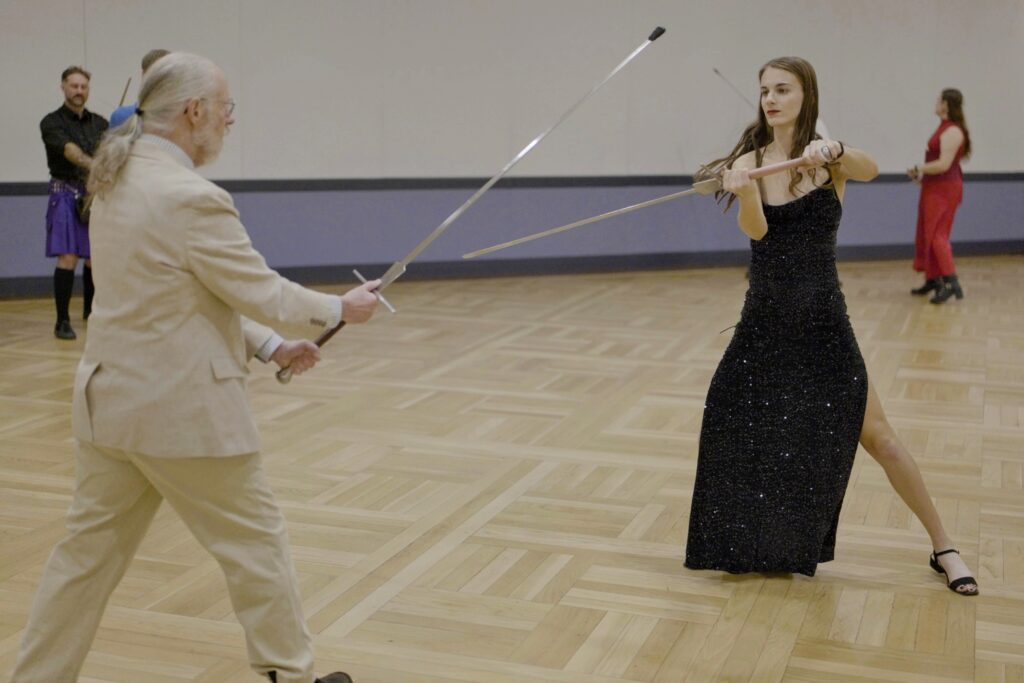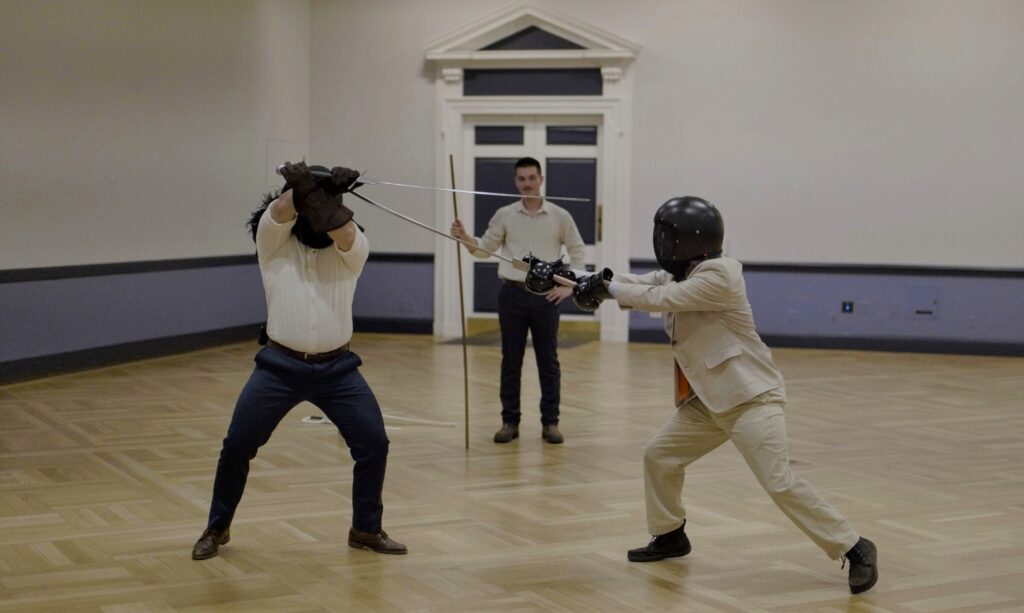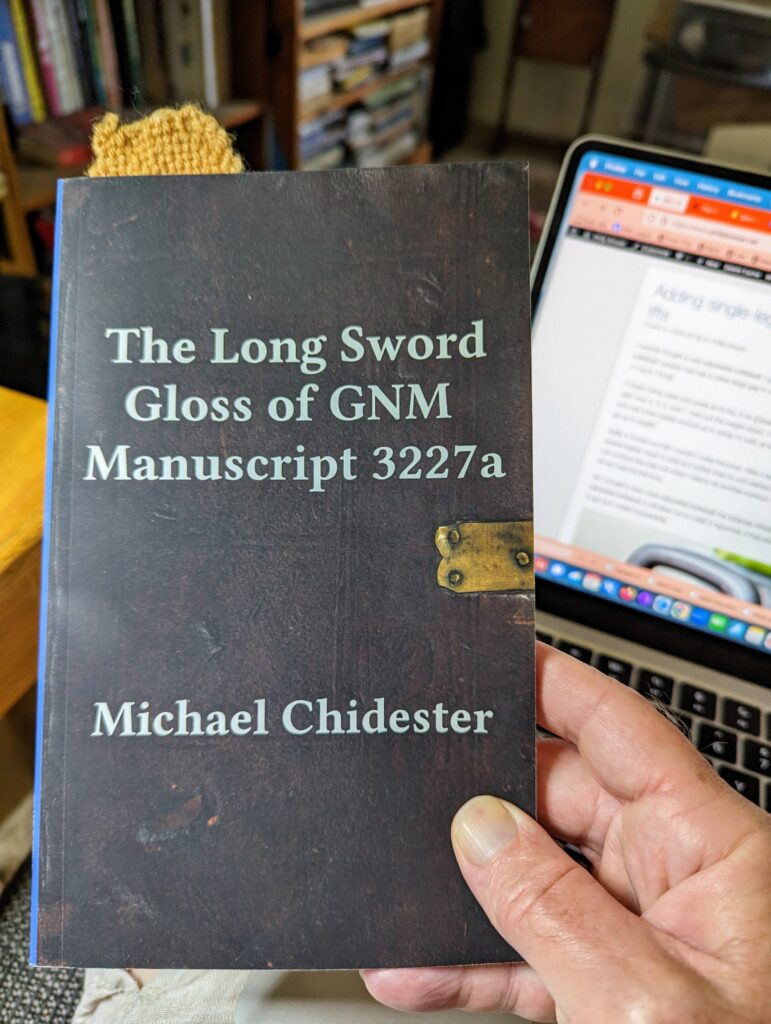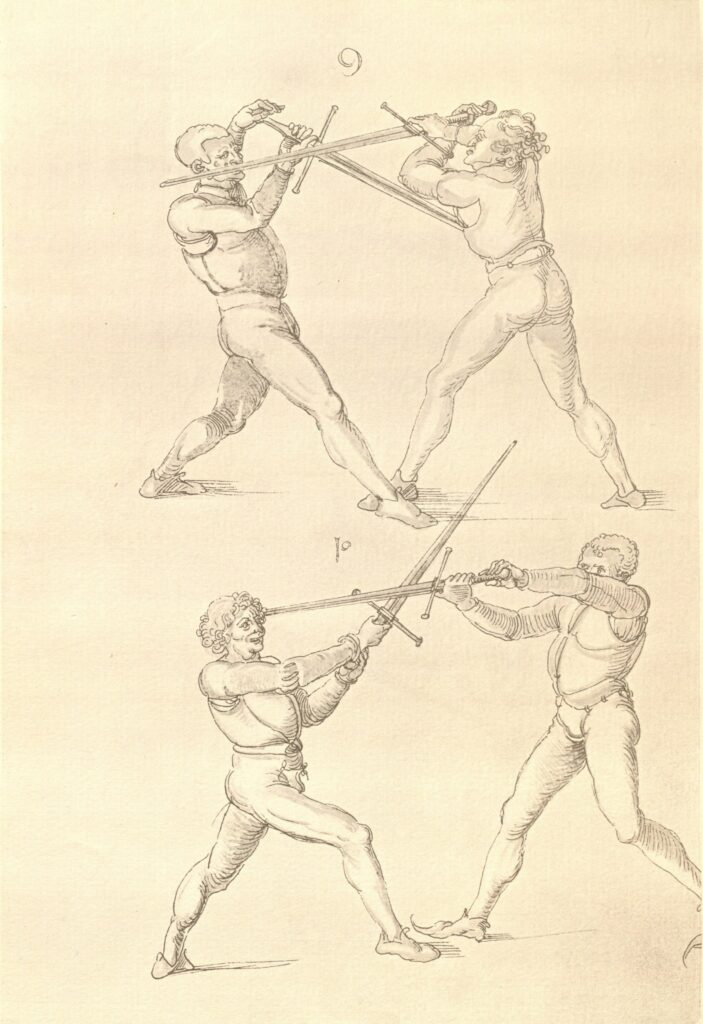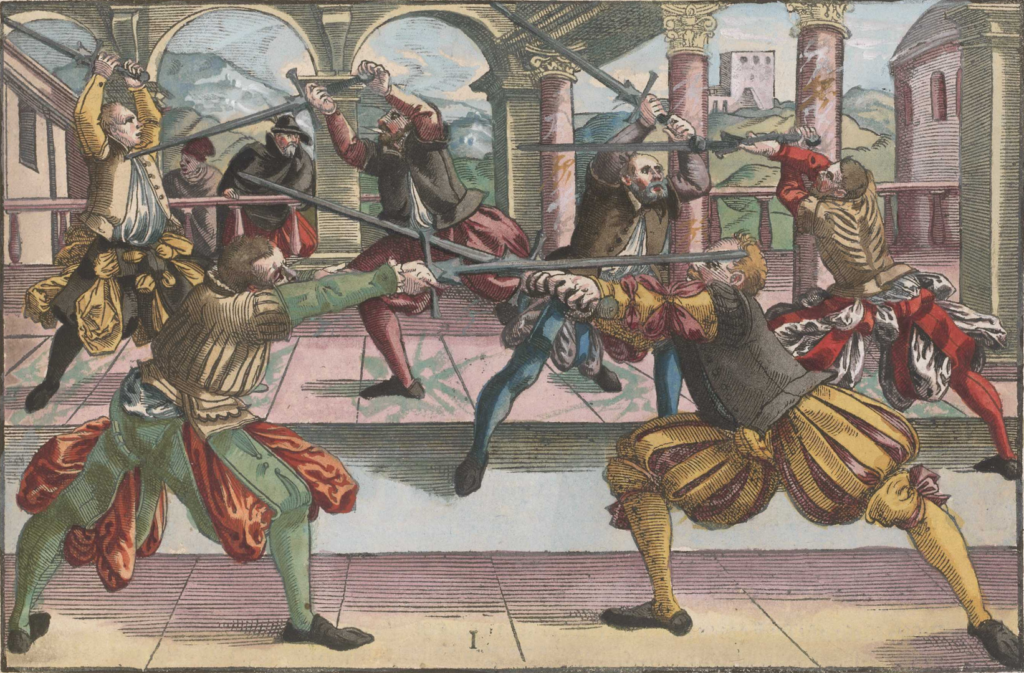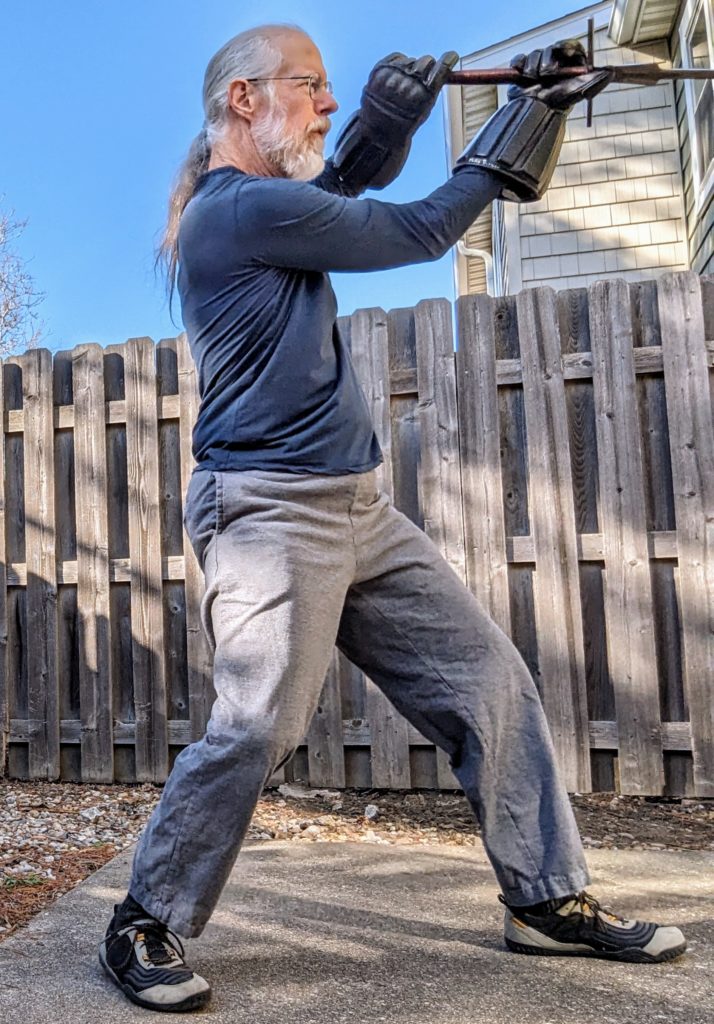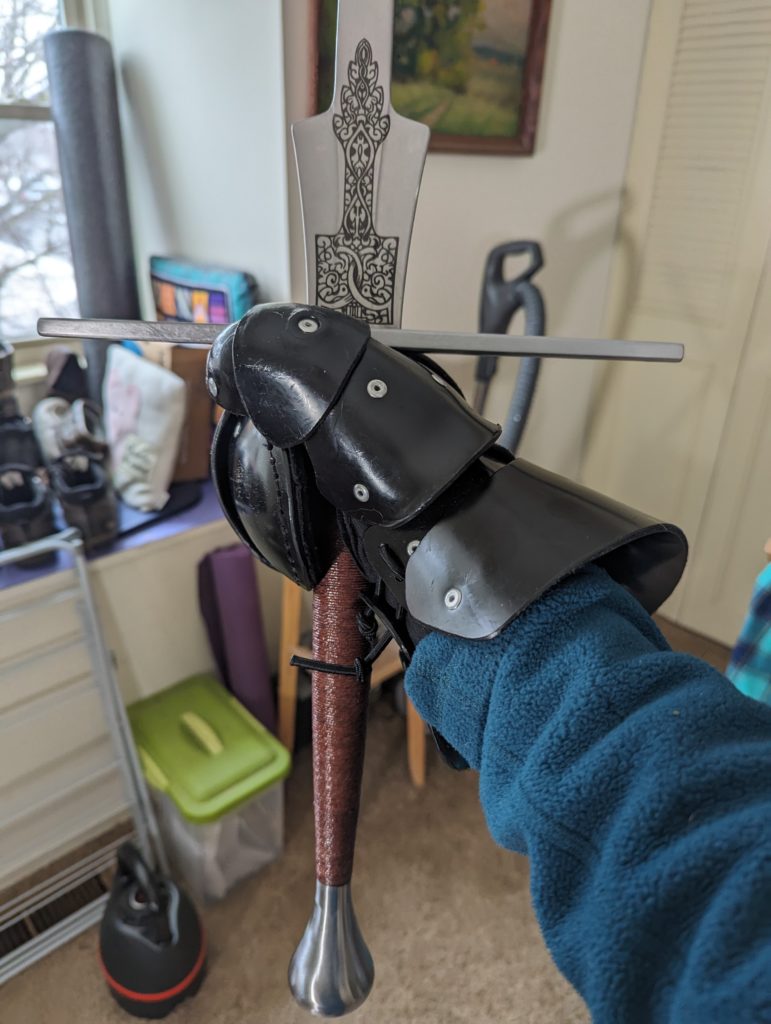Some months ago my elbow started hurting. (The little bump on the inside of my elbow joint was where it hurt.) I don’t think it was a sword-fighting injury; I think it was a dog-walking injury—but the sword fighting seemed to aggravate it.
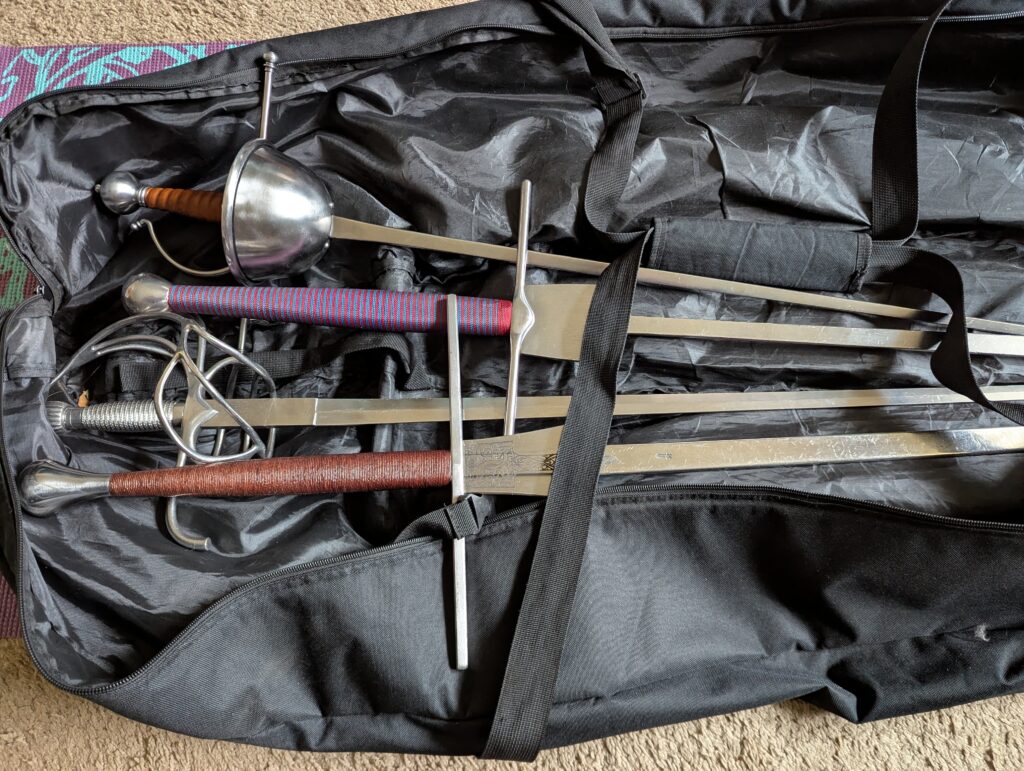
So I did less sword fighting. I switched from three times a week to just twice, and then just once, and then I quit going altogether. Then last week I traveled to Amherst to visit my brother and my mom, and just about didn’t exercise at all while I was on that trip. My elbow got steadily better, so that for about a week now, it hasn’t hurt at all.
So yesterday I went back for a sword-fighting class!
The class was kind of abbreviated. At the beginning of class we did a bearpit for a member’s birthday, so I got to do three passes at longsword. Then we did an actual class on rapier fencing. Then we were going to switch to longsword, but there was a tornado warning, and we all stopped to stare at our phones, looking at weather radar and texts with friends and relations in the area, making sure we were all okay.
Turns out that’s just a well. My elbow seemed to hold up fine during class, but today it’s a bit twingey again, so I’m glad I didn’t aggravate it more.
This pretty clearly means I’m not ready to go back to three-times-a-week training, but maybe it doesn’t rule out once-a-week training.
I’ll see how my elbow feels over the next few days.

